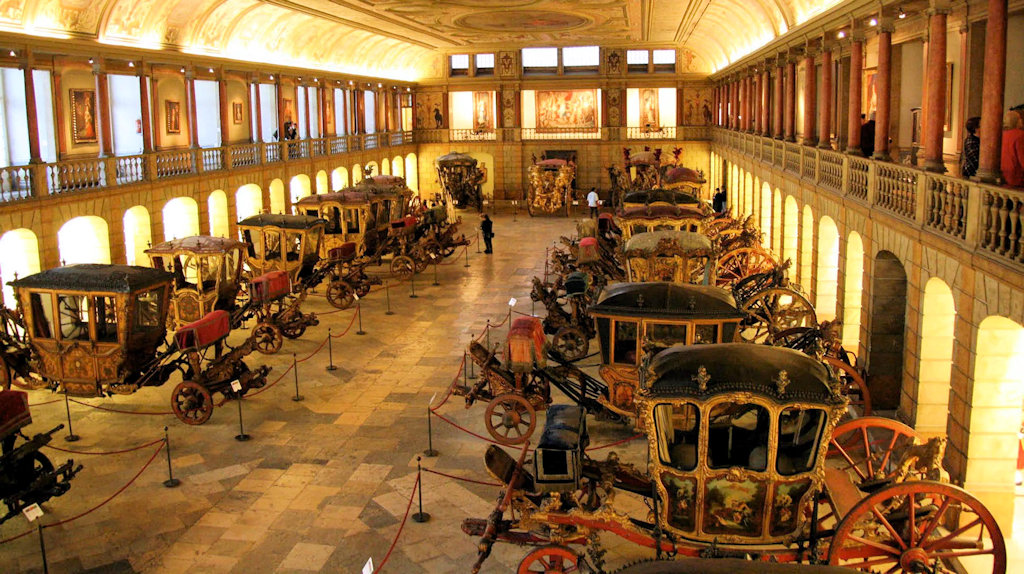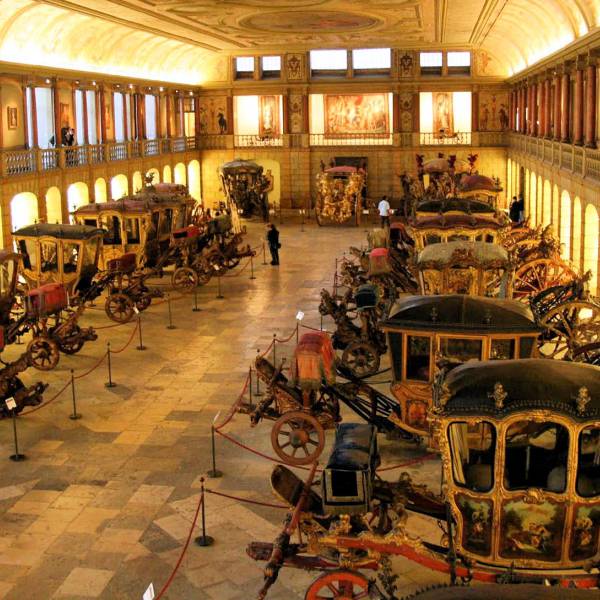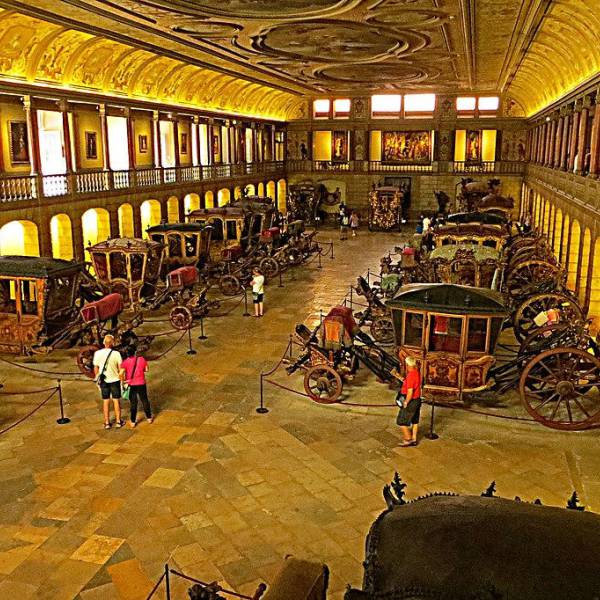In 1905, Queen Amélie established the National Coach Museum to preserve and showcase an extensive collection of carriages that belonged to the Portuguese royal family and nobility. This remarkable collection offers a comprehensive overview of the evolution of carriages from the late 16th through the 19th centuries, featuring examples crafted in various countries including Italy, Portugal, France, Spain, Austria, and England. Each carriage is a unique blend of artistry, engineering, and historical significance.
Among the highlights of the museum's collection is a late 16th/early 17th-century travelling coach that was used by King Philip II of Portugal (Philip III of Spain) during his journey from Spain to Portugal in 1619. This exquisite piece provides a glimpse into the luxurious mode of transportation used by the royals of that era. Additionally, visitors can marvel at several Baroque 18th-century carriages adorned with paintings and ornate gilt woodwork. Notable among these is a ceremonial coach presented by Pope Clement XI to King John V in 1715, as well as the three coaches of the Portuguese ambassador to Pope Clement XI, constructed in Rome in 1716.
Lisbon.vip Recommends
A visit to the National Coach Museum is a journey through time, immersing visitors in the grandeur and elegance of bygone eras. It offers a unique opportunity to appreciate the artistry, attention to detail, and technical prowess that went into the creation of these magnificent carriages. Beyond their aesthetic appeal, the carriages also serve as a window into the social and cultural aspects of the time, reflecting the customs, lifestyles, and aspirations of the aristocracy.
Located in the historic Belém District, the museum is conveniently situated among other iconic landmarks such as the Belém Tower and the Jerónimos Monastery. Its prime location allows visitors to easily explore the area and immerse themselves in the rich heritage of Lisbon.
In conclusion, the National Coach Museum in Lisbon stands as a testament to the rich cultural heritage of Portugal and the artistry of historical carriages. Through its remarkable collection, the museum preserves and celebrates the elegance, craftsmanship, and grandeur of these magnificent vehicles. A visit to this museum offers a unique opportunity to step back in time and appreciate the extraordinary beauty and historical significance of royal carriages, providing an unforgettable experience for enthusiasts of history, art, and culture.
Map View





